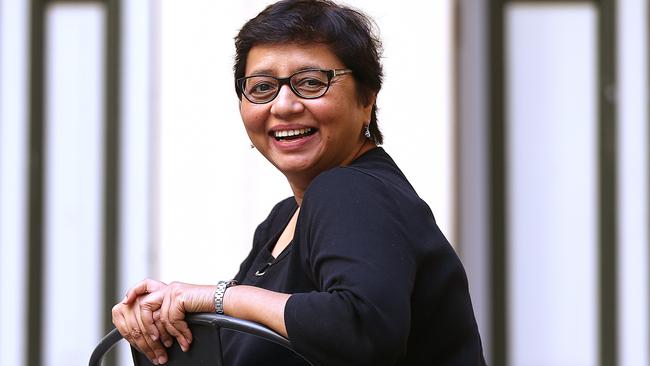Amenity key to airport’s design
When leading architect Charu Kokate and her team take on a project, their mission isn’t to garner acclaim.

When leading architect Charu Kokate and her team take on a project, their mission isn’t to garner acclaim.
“We don’t design iconic buildings,” she said. “People make it iconic.”
The principal and director of Safdie Architects, Singapore, was recently in Brisbane to deliver the keynote address at the Brisbane Open House conference, discussing design trends and creative processes shaping projects through Southeast Asia, focused on the delivery of Singapore’s Changi Airport.
Ms Kokate was part of the design team that delivered architect Moshe Safdie’s vision for the $1.3bn design project. A dome made from glass and steel houses a string of indoor amenities and attractions, including the world’s tallest waterfall and skynets to explore the forest of trees.
The design, briefed to be an “attraction”, drew on the city’s identity to deliver innovation.
“An attraction can mean anything. But the attraction had to be timeless, had to be something that related to the people committed to the city. And so the garden became the attraction,” Ms Kokate said.
“Since it belongs to Singapore, we have to do something that Singaporeans would enjoy, that people would enjoy.”
Talking to The Australian at Brisbane’s historic Land Administration Building, which will soon become enveloped into the futuristic $2bn Queens Wharf project, Ms Kokate said city-changing projects must find a balance between being pacesetting but also respectful of the people and place.
“As long as you respect what the neighbourhood is, what the city is, you can make good design work. It has to fit within the context and feel like it has an extension of the city,” Ms Kokate said.
“You can’t turn your back to what already exists, especially if it’s a historic building. But then there are many architects who build very modern buildings with their own distinct styles. I think it can work as long as they (architects) respect that.”
But regulators also play a role in allowing innovation. In Sydney, Star Casino’s push for a $530m glass tower containing a luxury hotel and residential units on the edge of Pyrmont waterfront was rejected by planning authorities after it was deemed “inappropriate”.
Not commenting directly on the Star project, Ms Kokate said: “When you design something that fits into the city’s big plan, (regulators) are more supportive. That doesn’t mean it’s easy, it’s not, it’s not even a shortcut, but they help out because they believe in your idea. It makes a big difference.”




To join the conversation, please log in. Don't have an account? Register
Join the conversation, you are commenting as Logout